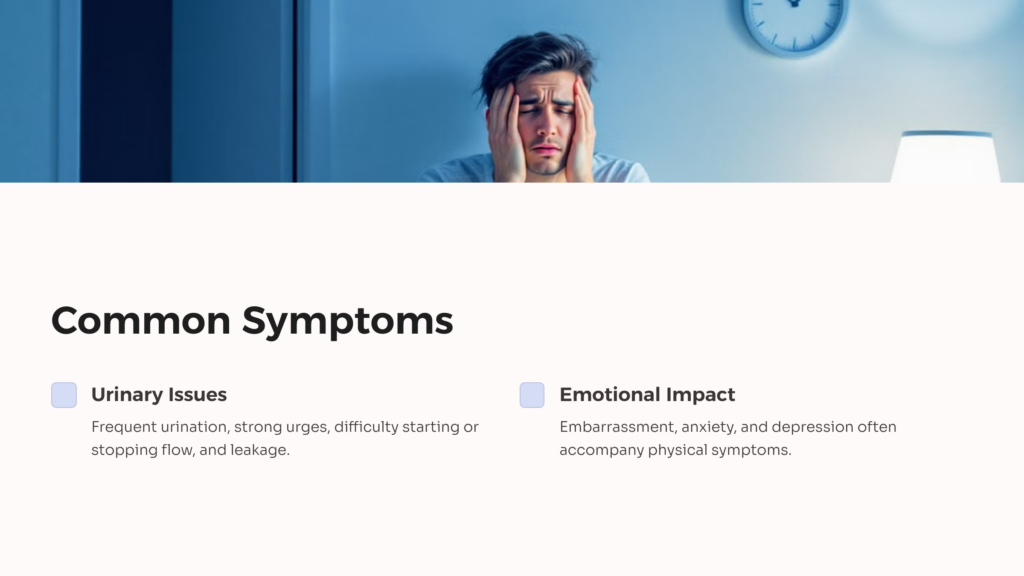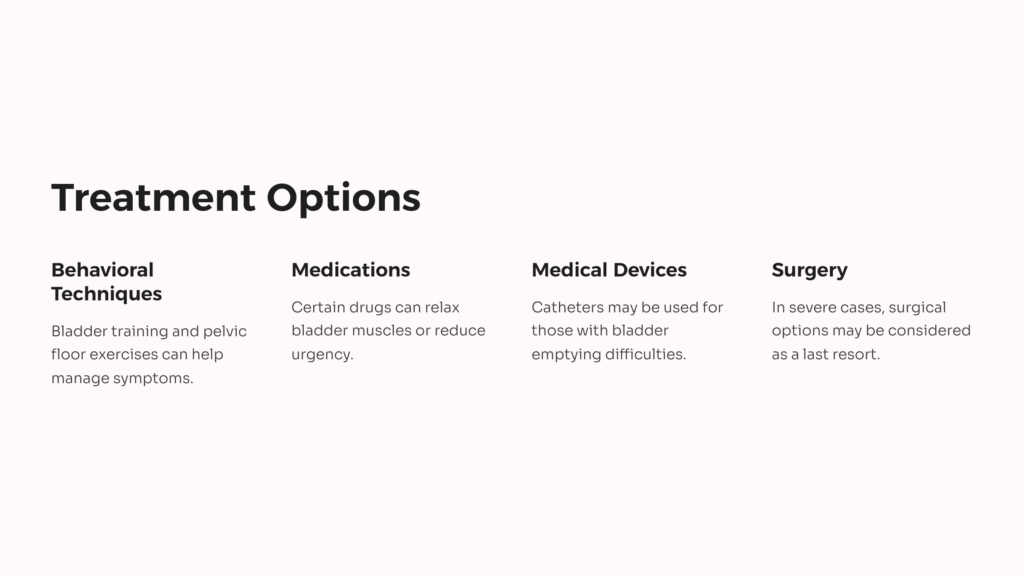Voiding dysfunction is a term used to describe a range of problems related to urination. For veterans, this condition can be a significant health issue that affects their daily lives. It’s not just about having trouble going to the bathroom; voiding dysfunction can impact a person’s quality of life, work, and social interactions.
At its core, voiding dysfunction describes conditions where there’s an issue with how the bladder and urethra work together. This can lead to various symptoms, from having to go to the bathroom too often to not being able to empty the bladder completely. For many veterans, these issues can be linked to their time in service, whether due to injuries, exposure to certain chemicals, or other service-related factors.
Understanding voiding dysfunction is the first step in getting the right help and support. It’s important for veterans to know that this is a recognized condition by the Department of Veterans Affairs (VA), and there are benefits available to those who are affected by it.
Common Symptoms of Voiding Dysfunction in Veterans

Veterans with voiding dysfunction may experience a wide range of symptoms. These can vary from person to person, but some of the most common signs include:
- Frequent urination, especially at night
- A sudden, strong urge to urinate
- Difficulty starting or stopping the flow of urine
- Leaking urine (urinary incontinence)
- Feeling like the bladder isn’t empty after urinating
For some veterans, these symptoms might be mild and only a minor inconvenience. For others, they can be severe enough to interfere with daily activities and sleep. It’s not uncommon for veterans with voiding dysfunction to plan their day around bathroom access or to avoid social situations altogether.
Physical symptoms are just part of the picture. Many veterans also deal with emotional and psychological effects. Feeling embarrassed, anxious, or depressed because of voiding dysfunction is common. This is why it’s crucial for veterans to seek help and understand that they’re not alone in dealing with these challenges.
How the VA Rates Voiding Dysfunction
The VA has a specific system for rating voiding dysfunction, which is used to determine the level of disability benefits a veteran may receive. This system is designed to reflect how much the condition impacts a veteran’s daily life and ability to work.

Ratings for voiding dysfunction are based on several factors, including:
- How often absorbent materials need to be changed
- The need for an appliance
- The frequency of urination during the day and night
- Any obstructive symptoms
The VA uses a scale from 0% to 60% for rating voiding dysfunction. A higher percentage means a more severe condition and typically results in higher compensation. For example, a 60% rating would be associated with a high level of daily interference and impairment due to the condition.
It’s important to note that these ratings can be combined with other service-connected conditions to determine an overall disability rating. This means that even if voiding dysfunction isn’t your only service-related health issue, it can still play a significant role in your total VA benefits.
Understanding the 38 CFR § 4.115a Rating Criteria

The 38 CFR § 4.115a is the specific regulation that outlines how the VA rates genitourinary system dysfunctions, including voiding dysfunction. This regulation is crucial for veterans to understand when filing a claim or appealing a decision.
According to this regulation, voiding dysfunction is rated under three main categories:
- Urine leakage
- Urinary frequency
- Obstructed voiding
For urine leakage, the ratings are:
- 20% if absorbent materials must be changed less than twice a day
- 40% if absorbent materials must be changed 2-4 times a day
- 60% if an appliance is required or if absorbent materials must be changed more than 4 times a day
Urinary frequency is rated based on how often a veteran needs to urinate during the day and night. Obstructed voiding is rated based on symptoms like a weak stream, hesitancy, or the need for catheterization.
Understanding these criteria can help veterans and their advocates build a stronger case when applying for benefits. It’s important to provide detailed medical evidence that aligns with these specific rating categories.
Steps to File a VA Claim for Voiding Dysfunction
Filing a VA claim for voiding dysfunction can seem daunting, but breaking it down into steps can make the process more manageable:
- Gather medical evidence: Collect all relevant medical records, including diagnoses, treatment history, and any documentation linking your condition to your military service.
- Complete the claim form: Fill out VA Form 21-526EZ for new claims or VA Form 20-0995 for supplemental claims. Be sure to clearly state that you’re claiming voiding dysfunction.
- Write a personal statement: Describe how voiding dysfunction affects your daily life and work. Be specific about symptoms and their impact.
- Get a buddy statement: If possible, get statements from fellow service members or family who can attest to your condition and its onset.
- Submit your claim: You can file online through the VA website, by mail, or in person at a VA office.
Remember, the key is to be thorough and provide as much relevant information as possible. Don’t hesitate to seek help from a Veterans Service Organization (VSO) or a VA-accredited attorney if you need assistance with your claim.
Voiding Dysfunction as a Secondary Condition
Sometimes, voiding dysfunction isn’t a direct result of military service but is caused by another service-connected condition. This is known as a secondary condition, and it’s important for veterans to understand this concept when filing claims.
Common primary conditions that can lead to voiding dysfunction include:
- Prostate cancer
- Spinal cord injuries
- Diabetes
- Multiple sclerosis
- Parkinson’s disease
When filing a claim for voiding dysfunction as a secondary condition, you’ll need to provide medical evidence that shows a clear link between your primary service-connected condition and your voiding dysfunction. This often requires a medical opinion from a doctor.
For example, if you have a primary service-connected condition of diabetes and develop voiding dysfunction as a result, you may be eligible for additional compensation. The key is establishing a clear connection between the two conditions.
Treatment Options for Veterans with Voiding Dysfunction
While dealing with voiding dysfunction can be challenging, there are various treatment options available to veterans. The right treatment depends on the specific type and severity of the dysfunction.

Some common treatment options include:
- Behavioral techniques: Bladder training and pelvic floor exercises
- Medications: To relax bladder muscles or reduce urgency
- Catheters: For those who have trouble emptying their bladder
- Surgery: In more severe cases, surgical options may be considered
The VA healthcare system offers many of these treatments, and veterans should discuss their options with their VA healthcare provider. It’s important to find a treatment plan that not only addresses the physical symptoms but also considers the impact on quality of life.
Remember, treatment is an ongoing process, and what works best may change over time. Regular follow-ups with healthcare providers are crucial for managing voiding dysfunction effectively.
The Role of Medical Evidence in VA Claims
When it comes to VA claims for voiding dysfunction, medical evidence plays a crucial role. Strong, well-documented medical evidence can make the difference between a successful claim and a denial.
Key types of medical evidence include:
- Diagnosis from a qualified medical professional
- Treatment records showing the ongoing nature of the condition
- Medical opinions linking the condition to military service
- Test results, such as urodynamic studies
It’s not just about having medical records; the quality and relevance of the evidence matter. Medical records should clearly show the severity of your symptoms and how they align with the VA’s rating criteria.
For veterans, it’s important to be proactive in gathering this evidence. Keep copies of all medical records, and don’t hesitate to ask your doctor for a written opinion if needed. If you’re seeing a non-VA doctor, make sure they understand the importance of documenting your symptoms in a way that corresponds to VA rating criteria.
Common Challenges in Securing VA Ratings
While the VA has clear guidelines for rating voiding dysfunction, veterans often face challenges in securing appropriate ratings. Understanding these challenges can help you better prepare your claim.
Some common issues include:
- Lack of detailed medical evidence
- Difficulty proving service connection, especially for secondary conditions
- Inconsistencies in VA examinations
- Misunderstanding of the rating criteria by claims processors
One way to overcome these challenges is to be as thorough and specific as possible in your claim. Provide detailed descriptions of your symptoms and how they impact your daily life. If you disagree with a VA examination, consider getting an independent medical opinion.
It’s also important to understand that the VA claims process can be slow and sometimes frustrating. Patience and persistence are key. Don’t be discouraged if your initial claim is denied; many successful claims go through one or more appeals.
How to Appeal a Denied VA Claim for Voiding Dysfunction
If your VA claim for voiding dysfunction is denied, you have the right to appeal. The appeals process can be complex, but understanding your options is crucial.
Here are the basic steps for appealing a denied claim:
- Review the decision letter: Understand why your claim was denied. This will help you focus your appeal.
- Choose your appeal lane: The VA offers several options to appeal, including a supplemental claim, a higher-level review, or an appeal to the Board of Veterans’ Appeals.
- Gather new evidence: If you’re filing a supplemental claim, you’ll need to submit new and relevant evidence.
- Meet deadlines: Be aware of the time limits for filing your appeal. Missing a deadline can hurt your case.
- Consider getting help: An accredited Veterans Service Organization (VSO) or attorney can provide valuable assistance with your appeal.
Remember, many veterans succeed in their appeals. The key is to address the specific reasons for the denial and provide strong evidence to support your claim.
Maximizing Your Benefits: Tips for Veterans
When dealing with voiding dysfunction and the VA claims process, there are several strategies veterans can use to maximize their benefits:
- Be thorough in your documentation: Keep a detailed log of your symptoms, including frequency and severity. This can be powerful evidence for your claim.
- Understand the rating criteria: Familiarize yourself with how the VA rates voiding dysfunction so you can describe your symptoms in relevant terms.
- Consider all related conditions: If you have other service-connected conditions that might be causing or worsening your voiding dysfunction, make sure to include this information in your claim.
- Stay engaged in your healthcare: Regular medical check-ups and following treatment plans not only help manage your condition but also provide ongoing documentation for your claim.
- Don’t hesitate to seek increases: If your condition worsens over time, you can file for an increased rating.
By being proactive and informed, you can ensure that you’re receiving all the benefits you’re entitled to for your service-related voiding dysfunction.
Resources and Support for Veterans
Dealing with voiding dysfunction and navigating the VA system can be overwhelming, but there are many resources available to help veterans:
- Veterans Service Organizations (VSOs): Organizations like the American Legion, VFW, and DAV offer free assistance with claims and appeals.
- VA Medical Centers: Provide treatment and can help document your condition for claims purposes.
- Vet Centers: Offer counseling and support for veterans dealing with the emotional impact of health issues.
- Online Resources: Websites like Veterans Law Office and Woods Lawyers provide valuable information on VA benefits and the claims process.
- Support Groups: Many veterans find comfort and practical advice in support groups for those dealing with voiding dysfunction.
Remember, you’re not alone in this journey. Reaching out for help and support is a sign of strength, not weakness, and AllVeteran.com is here to help. Check out AllVeteran.com and take our quiz for a free medical evidence screening today. We are here to help you get the care and benefits you deserve for your service to our country.
 AllVeteran.com Advisors
AllVeteran.com Advisors
With expertise spanning local, state, and federal benefit programs, our team is dedicated to guiding individuals towards the perfect program tailored to their unique circumstances.











